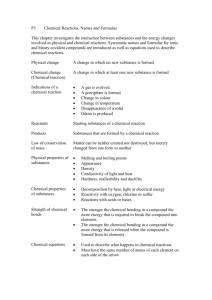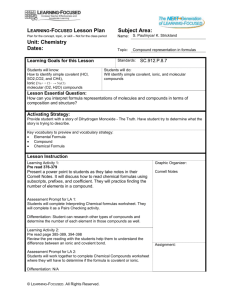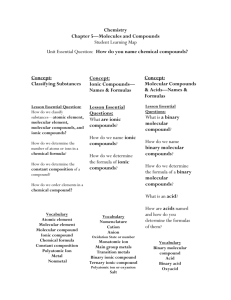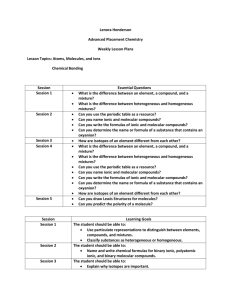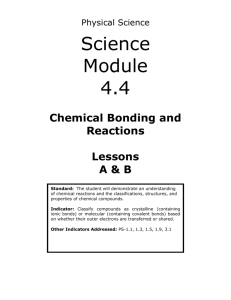Ionic_compnds_mole_analysing_subst.
advertisement
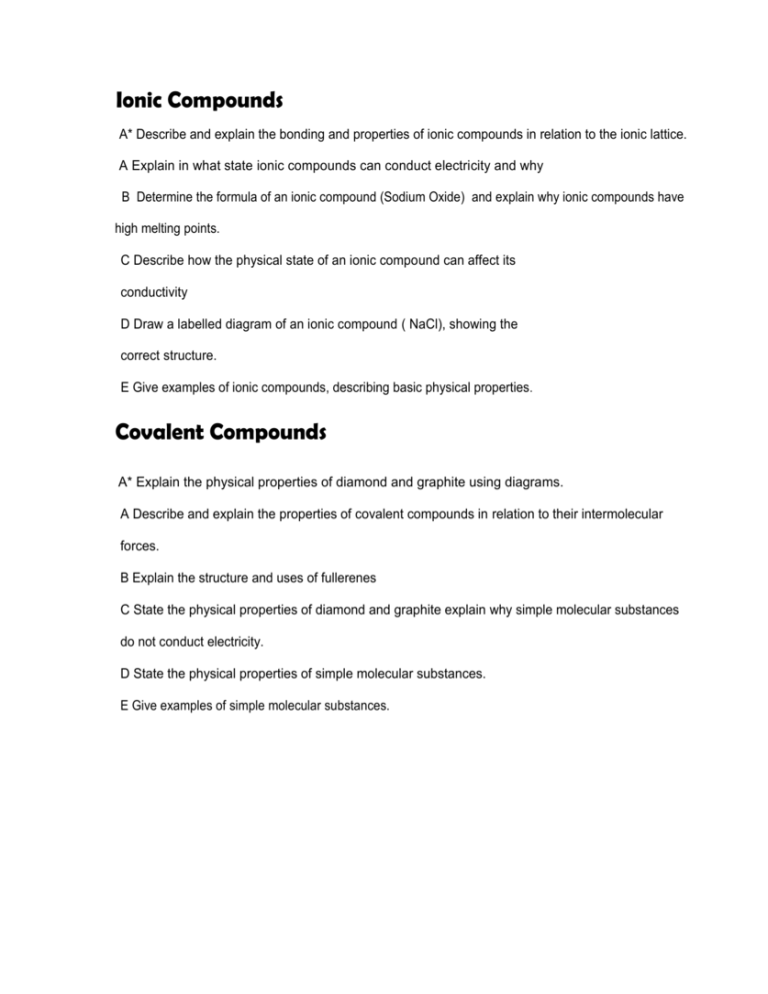
Ionic Compounds A* Describe and explain the bonding and properties of ionic compounds in relation to the ionic lattice. A Explain in what state ionic compounds can conduct electricity and why B Determine the formula of an ionic compound (Sodium Oxide) and explain why ionic compounds have high melting points. C Describe how the physical state of an ionic compound can affect its conductivity D Draw a labelled diagram of an ionic compound ( NaCl), showing the correct structure. E Give examples of ionic compounds, describing basic physical properties. Covalent Compounds A* Explain the physical properties of diamond and graphite using diagrams. A Describe and explain the properties of covalent compounds in relation to their intermolecular forces. B Explain the structure and uses of fullerenes C State the physical properties of diamond and graphite explain why simple molecular substances do not conduct electricity. D State the physical properties of simple molecular substances. E Give examples of simple molecular substances. Calculating Mass, Moles and Yield A* Work out empirical and molecular formulas. A Calculate the yield for a reaction. B Balance equations B Calculate reaction yields explain why reactions do not give a 100% yield. B Calculate the mass of reactants / products from a given mass and balanced chemical reactions. B Explain what an empirical formula is. C Recall what a mole is. C Use the formula mass = Mr × moles for calculating one unknown Analysing Substances A* Identify molecular ion peak in a mass spectrogram and explain how a mass spectrometer can give the relative formula mass of each of the substances separated A Interpret a gas chromatogram B Describe how gas chromatography is used to analyse substances C State the advantages of instrumental method for analyzing chemical D state the use of paper chromatography





